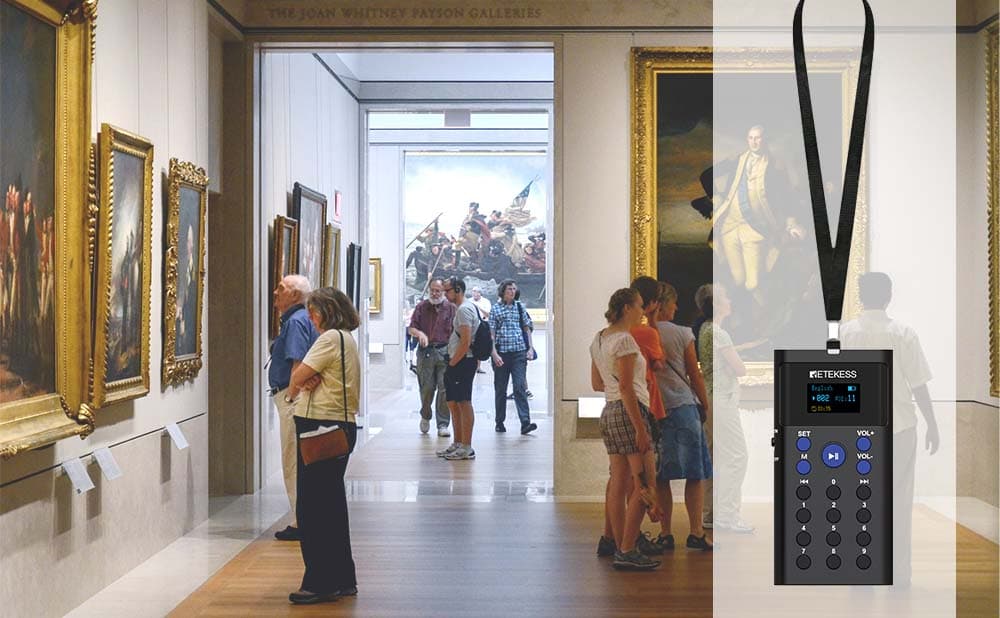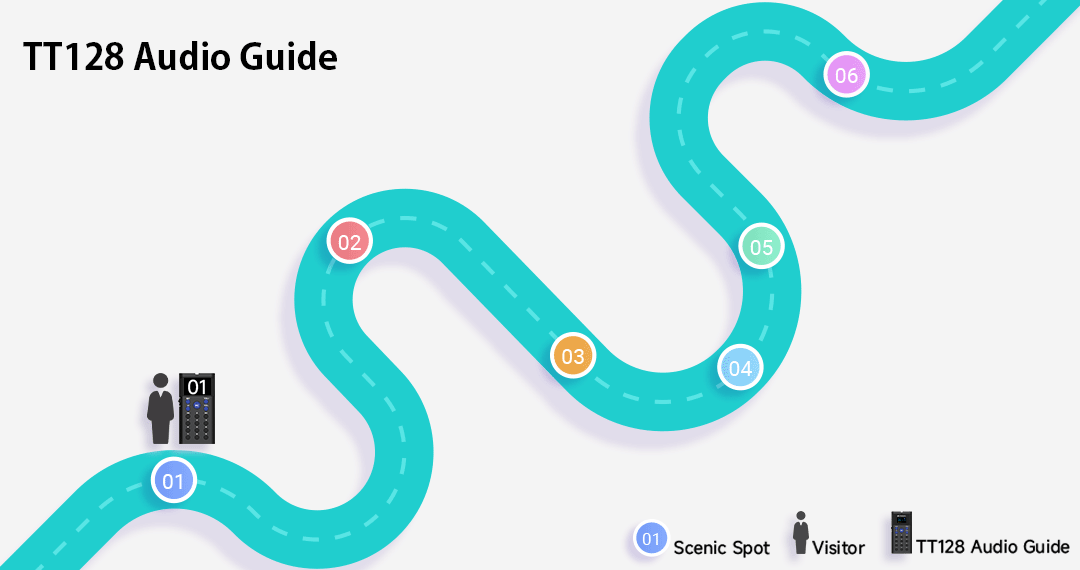About Museum Audio Guide Equipment & Which to Choose

About Museum Audio Guide Equipment & Which to Choose
- Claire
- museum audio guide equipment, museum audio guide, multilingual audio guides, audio tour guide system
In the world of cultural exploration and museum visits, the experience has gone far beyond simply visiting exhibits and viewing artifacts. If you are a museum director, a manager of a cultural institution, or the director of a tourist attraction, you may have considered investing in an audio guide system to enhance the visitor experience. But what exactly is an audio guide system? How can it benefit your organization? How do you choose the right system? I will take you through it one by one.
What is an Audio Guide?
An audio guide device is a portable device or app-based solution that provides pre-recorded audio commentary about a specific place. These systems are often used in museums, art galleries, historical sites, and cultural attractions to provide an immersive and informative experience.
Self guided audioguides address several challenges facing museums and cultural attractions:
1. Improve visitor engagement
Many visitors have difficulty fully appreciating exhibits due to a lack of context or information. Museum audio guides provide detailed explanations, stories, and insights that bring exhibits to life, making the experience more engaging and memorable.
2. Overcome language barriers
Museums may often receive international visitors who do not understand the local language. Multilingual audio guides make it easy to provide content in multiple languages. For example, a large international museum might offer audio guides in English, Spanish, French, Italian, and several other languages. This allows visitors who don't speak the local language to fully enjoy and understand the exhibits.
3. Reduce Staff Workload
For museums and cultural institutions, hiring and training tour guides can be expensive and time-consuming. Audio tour systems can replace or supplement human tour guides. This is especially beneficial for institutions with limited budgets or those that may not have enough guides to meet demand during peak tourist seasons.
4. Encourage Autonomous Exploration
Some visitors may want to spend a long time on a particular exhibit, while others may prefer to explore the museum more quickly. Audio tour guide equipment allows visitors to control the speed of their tour. They can pause, rewind, or fast-forward the audio at will, which is not possible with a tour guide.
5. Increase Revenue
By offering audio guides as an additional service, museums and attractions can generate additional revenue. Visitors are often willing to pay for a richer experience.
What are the key aspects to consider before purchasing an audio tour guide system?
Museum audio tour systems come in many forms:
- Traditional portable audio guides: stand-alone devices designed specifically for delivering audio tours, usually with headphones.
2. Smartphone apps: mobile applications that visitors can download to their smartphones.
3. Multimedia devices: advanced systems that include audio, video, and interactive features.
4. GPS-enabled systems: devices that automatically trigger audio content based on visitor location.
Traditional audio guide devices have significant advantages over other forms. They do not rely on WiFi, are more stable and easier to operate than mobile apps, and do not require bringing their own devices; they are more portable than multimedia devices, allowing visitors to focus on the audio guide without distracting them; and they do not require the installation of infrastructure, are not subject to signal interference, and are more autonomous than GPS-enabled systems.

Key features to look for in an Audio Guide Player
Customized content
Every attraction is unique, so your audio guide should allow for customization. Look for a system that allows you to update content, add new exhibits, or tailor the experience for different visitor groups (e.g., children, experts).
Ease of content management
The content management system should be easy to use. Non-technical staff should be able to easily upload, edit, and manage audio content.
Sufficient memory capacity
The larger the memory capacity, the more explanations can be stored, including detailed introductions of more attractions, explanations in different languages, and expanded content on multiple themes. This allows users to use the same device to visit multiple attractions in one trip without worrying about not being able to obtain the required explanation resources due to insufficient memory, which improves the efficiency and convenience of the device.
Durability and maintenance
Durability is essential for long-term and high-frequency use of museum audio guide systems. Choose a system that is easy to clean, repair, and maintain. Systems with long battery life are ideal, ensuring that the device continues to operate stably and provide uninterrupted service to visitors.
Ease of Use
The manual MP3 audio player should be intuitive and user-friendly for people of all ages and technical backgrounds. This includes simple controls for playing, pausing, and adjusting volume. Systems with complex interfaces can frustrate visitors and lead to negative experiences.
Multi-language support
If your attraction attracts international visitors, choose a system that offers multiple language options. This feature can significantly enhance the visitor experience.
Customer Service & Warranty
Choose a vendor that values customer service, including timely answers to inquiries, after-sales service, technical support, etc. Warranties and 30-day returns are equally important, demonstrating the vendor's confidence and commitment to their products.
The Retekess audio guide system has all of the key features mentioned above and is still affordable. Ready to take your museum or cultural attraction to the next level? Contact our professional team now for more information.








